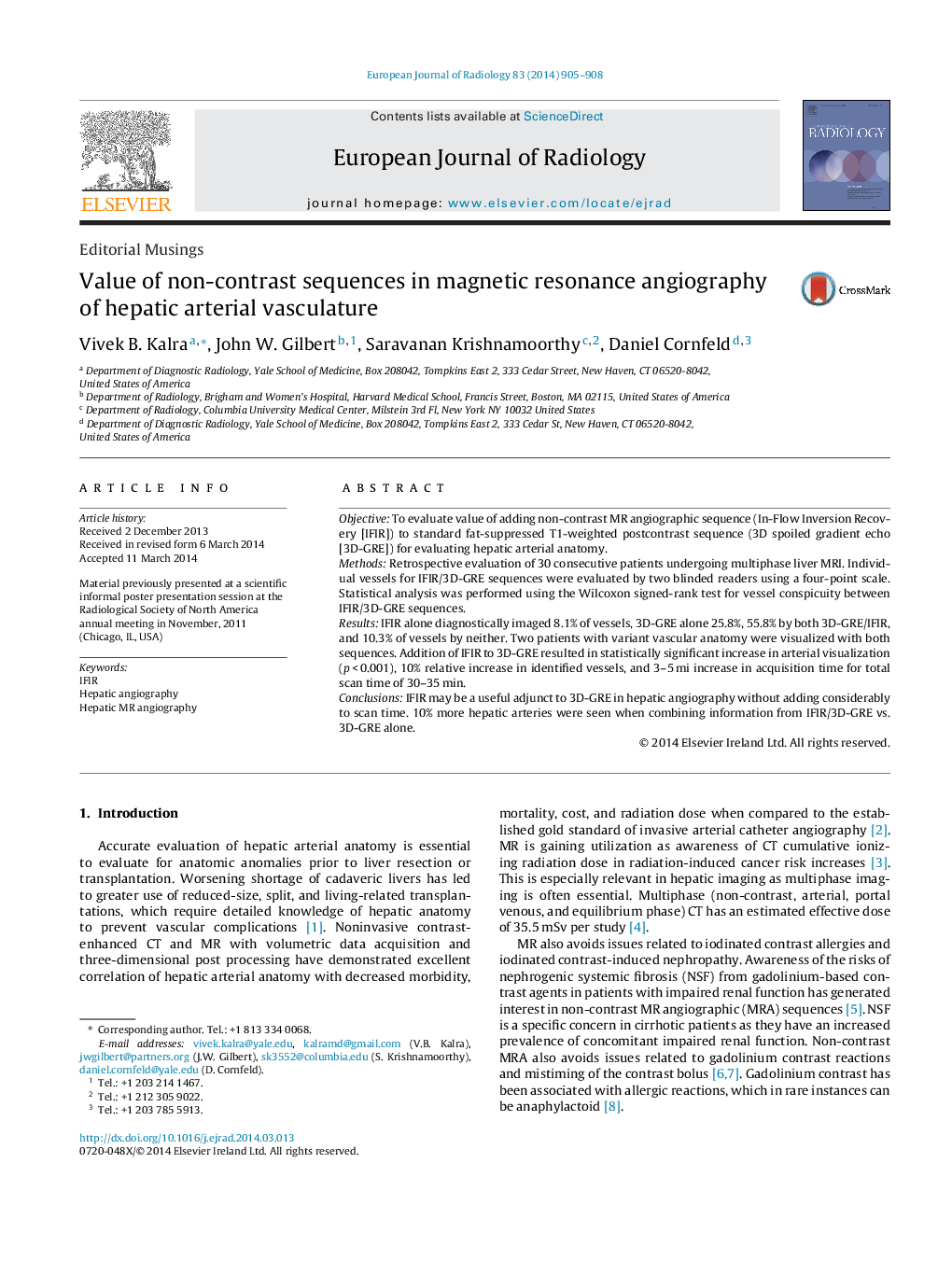| Article ID | Journal | Published Year | Pages | File Type |
|---|---|---|---|---|
| 4225231 | European Journal of Radiology | 2014 | 4 Pages |
ObjectiveTo evaluate value of adding non-contrast MR angiographic sequence (In-Flow Inversion Recovery [IFIR]) to standard fat-suppressed T1-weighted postcontrast sequence (3D spoiled gradient echo [3D-GRE]) for evaluating hepatic arterial anatomy.MethodsRetrospective evaluation of 30 consecutive patients undergoing multiphase liver MRI. Individual vessels for IFIR/3D-GRE sequences were evaluated by two blinded readers using a four-point scale. Statistical analysis was performed using the Wilcoxon signed-rank test for vessel conspicuity between IFIR/3D-GRE sequences.ResultsIFIR alone diagnostically imaged 8.1% of vessels, 3D-GRE alone 25.8%, 55.8% by both 3D-GRE/IFIR, and 10.3% of vessels by neither. Two patients with variant vascular anatomy were visualized with both sequences. Addition of IFIR to 3D-GRE resulted in statistically significant increase in arterial visualization (p < 0.001), 10% relative increase in identified vessels, and 3–5 mi increase in acquisition time for total scan time of 30–35 min.ConclusionsIFIR may be a useful adjunct to 3D-GRE in hepatic angiography without adding considerably to scan time. 10% more hepatic arteries were seen when combining information from IFIR/3D-GRE vs. 3D-GRE alone.
